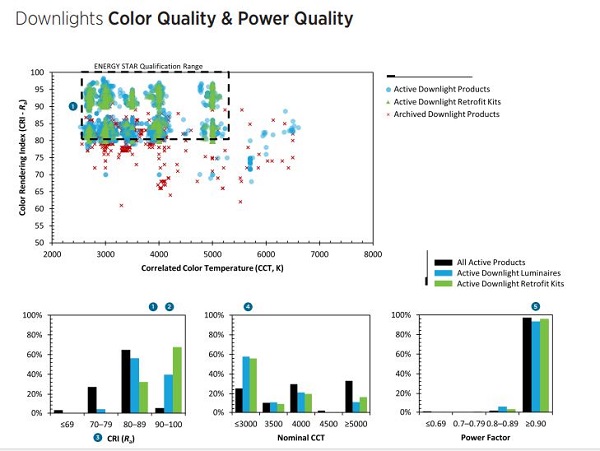The U.S. Department of Energy's CALiPER program has released a new Snapshot report on LED downlights. Among the key findings of the Snapshot, which is based on DOE's LED Lighting Facts® database:
-
The efficacy of LED downlights is lower than for most other product categories, although it's higher than for downlights using conventional light sources. About 50% of the downlights listed have a luminous efficacy greater than 70 lm/W, with only 2% above 100 lm/W.
-
The mean efficacy for downlight luminaires only increased by 1 lm/W in the past 15 months, while other comparable product types gained between 5 and 13 lm/W.
-
Most of the listed LED downlights fall into traditional lumen-output ranges for residential and commercial applications. A wide variety of performance is available.
-
The downlight category features a greater percentage of products with a CRI in the 90s than any other product category in the LED Lighting Facts database.

|
|
Click the image to know more (Image: U.S. Department of Energy) |
There are many factors that influence product efficacy, but the efficacy trend with LED downlights is concerning. The importance of efficacy gains is not solely related to energy savings. Improved LED package efficiency can simplify thermal management and allow more flexibility in product design, ultimately reducing product cost. With the average LED Lighting Facts-listed downlight at just over one-third of the DOE target for efficacy for LED luminaires (203 lm/W by 2025), there's substantial room for continued performance gains, which should not be overlooked.
For a closer look at the findings, download the full report.





 CN
TW
EN
CN
TW
EN





